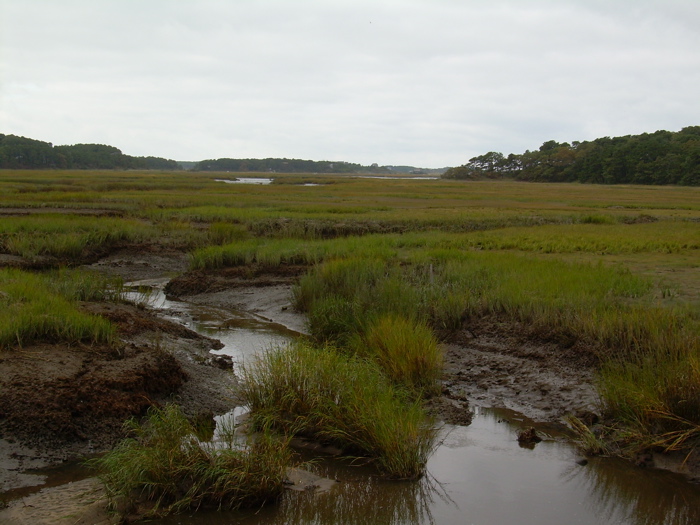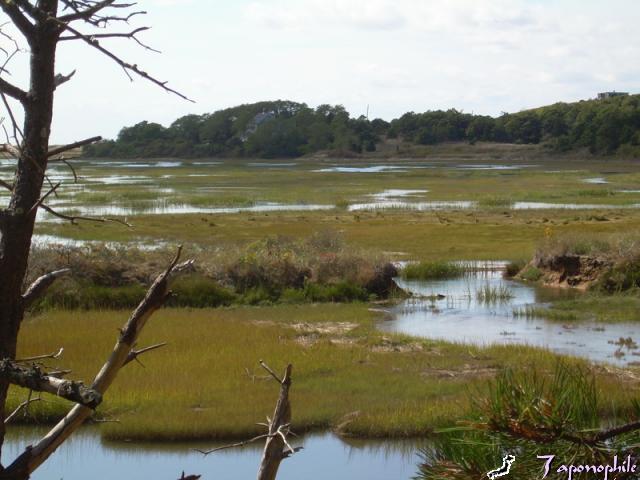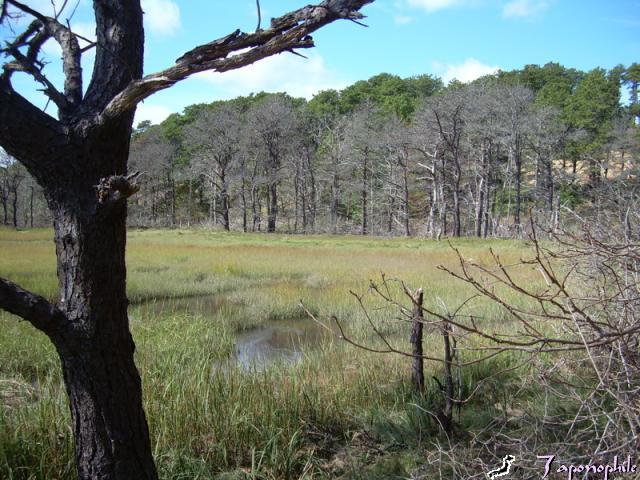Salt Marsh Restoration on the Outer Cape
Information from classes previously offered
Learn some of the basic elements of restoring the Outer Cape’s diked salt marshes. Investigate the social, ecological, educational, administrative and financial issues that go along with turning back the hands of time. These classes will study the nearby Wellfleet Herring River salt marsh restoration project as a model. Class preparation may include some reading material. Classes will include slide presentations, visiting scientists, discussion and a field trip to the Herring River in Wellfleet, MA. These classes are for students, interested residents or town officials who want to learn more about the need for salt marsh restoration, the elements and the process of restoration.
First Class: Definition and values and processes of a healthy salt marsh
a. Tide heights similar to harbor b. Flushing with tidal exchange c. Salinity only slightly less than harbor d. Water temperature moderated by volume of flow e. Dissolved oxygen from circulation f. Chemical pH benefits from natural carbonate buffers g. Bio diversity enhanced by dynamic process
Second Class: Conditions in diked salt marshes
a. Attenuated tides due to restriction b. Reduced flushing and dewatering c. Reduced salinity allows invasive vegetation d. Water temperature fluctuations e. Low dissolved oxygen from lack of flushing f. Acidic pH from peat decomposition g. Bio diversity reduced: insects; diatoms; bacteria
Third Class: Field Trip-Survey of Outer Cape diked salt marshes
Last Class: Components of restoration planning
a. Create collaborative effort b. Investigate social issues c. Investigate private property issues d. Determine political “climate†e. Assess bio impacts of transition f. Investigate costs and benefits g. Investigate permitting requirements
Components of restoration management
a. Clearly stated goals b. Concept for implementing restoration c. Alternative concepts d. Protocol for monitoring and assessment e. Protocol for management decision making f. Protocol for maintenance and contingency g. Management plan for bio impacts h. Options for social issue resolution i. Options for private property resolution j. Identify bio indicators of success k. Development of grant opportunities l. Identify permitting sequence and requirements m. Inclusion of education and outreach
.

The essence of a salt marsh is defined by the moon, which creates tides.

The process of a salt marsh is defined by flushing, including dewatering without restriction.
Without planning, saltwater may enter previously impounded marshes through broken dikes.
Extensive habitat imbalances can be created by sudden, unplanned changes in salinity. The trees surrounding this instant restoration (when a dike failed) have died.

